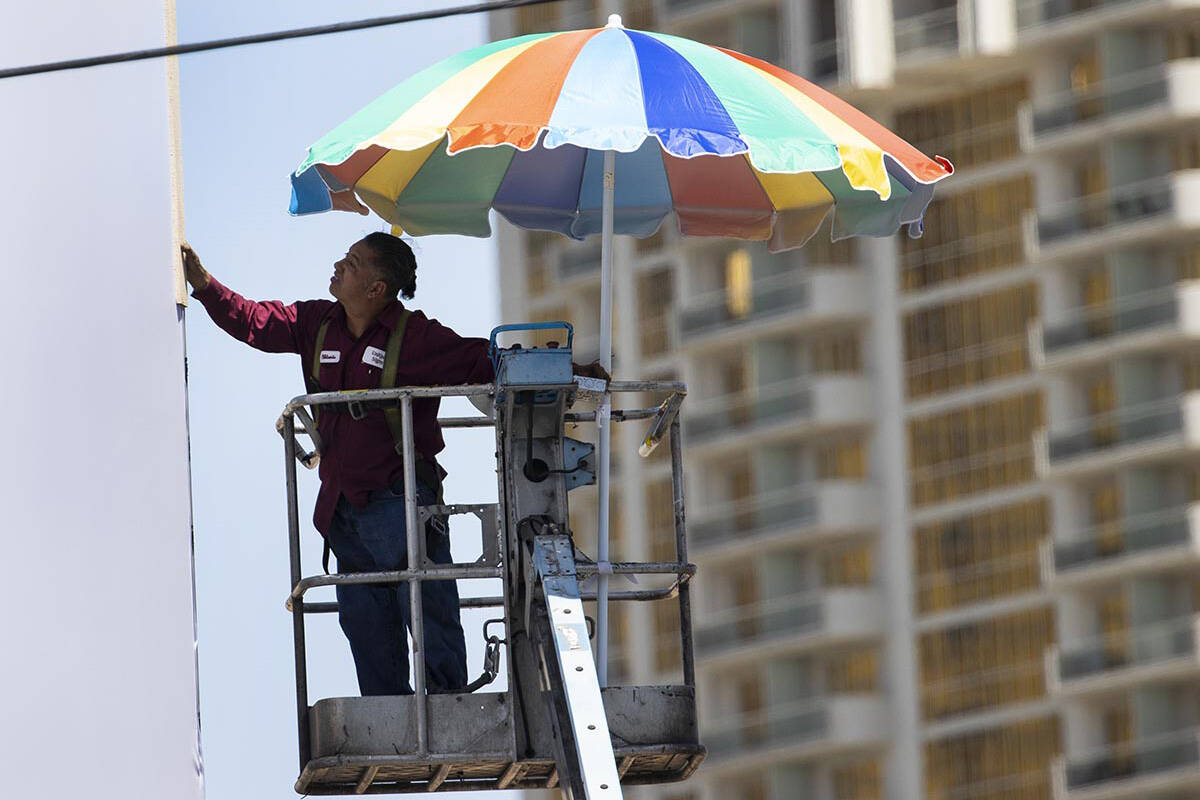‘A real hazard’: Nevada adopts first-ever regulation to protect workers from heat
Nevada approved its first-ever regulation to protect indoor and outdoor workers from the heat on Wednesday after a four-year process that saw a failed bill and later brought industry representatives and activists to the table.
The Nevada secretary of state’s office signed the regulation, now compelling businesses with more than 10 employees to conduct a so-called “job hazard analysis” of working conditions that could lead to heat illness.
After that, businesses must create a written safety program that addresses issues such as access to potable water and breaks for employees showing signs of heat illness. Nevada’s Occupational Safety and Health Administration then will be able to enforce those plans.
Victoria Carreon, the Nevada Division of Industrial Relations administrator who oversees OSHA, said in an interview that the department has diligently found solutions since 2020 to come up with a standard that considered the needs of both employees and employers.
“Nevada has always had a hot desert climate where heat is a real, present hazard,” Carreon said. “There wasn’t anything in place at the federal level that would protect Nevada workers, so we thought that it was important for us to begin the process of trying to implement something.”
Currently, no federal regulation mandates shade, water or breaks for workers, though the Biden administration’s Department of Labor signaled in July that a rule could be approved at an uncertain future date.
Wednesday’s news comes after a record summer in Southern Nevada, where Las Vegas broke an all-time record with a 120-degree day. Heat has led to the deaths of at least 402 people in 2024, according to the Clark County coroner’s office, and the death toll is far from final as investigators close out cases.
Heat complaints to Nevada OSHA are on the rise this year, too, with 467 across the state, 401 of which were filed in Southern Nevada. That’s the most since 2015, when data begins on the agency’s dashboard. Carreon said there may be a spike later, when more employees know about the regulation, but her belief is that complaints will decline in the long term.
Input from industry, advocates and more
Efforts to establish worker heat protections aren’t new. The Legislative Commission rejected a version of the regulation in 2022, and a bill that Nevada OSHA wasn’t involved in crafting failed in the Nevada Assembly in 2023.
Gov. Joe Lombardo’s office deferred to the secretary of state’s office to comment on the regulation, though a spokeswoman for the secretary of state said signing the regulation was solely an administrative duty. In other states like Texas and Florida, pressure from industry has led politicians to avoid approving similar heat protections.
A major reason Nevada succeeded in passing the regulation is the elimination of a temperature threshold that would have required employers to take action against heat, Carreon said.
“We decided that it wasn’t appropriate to have a uniform temperature that you would use across the board in every instance,” she said. “What would be better is to do a job hazard analysis at every type of job that a business has to determine what kind of hazards employees would face in that position.”
One of the most prominent voices against a heat protection regulation with a temperature threshold was the Vegas Chamber, an organization that supplies resources to Las Vegas’ businesses.
The plan that every business will need to develop before next summer must consider a list of concerns. Among them are access to potable water, breaks if an employee shows signs of heat illness, employee training and emergency response.
Paul Moradkhan, the chamber’s senior vice president of government affairs, said it was vital that the regulation wasn’t difficult to implement across Nevada’s many industries.
Having businesses create their own solutions that still consider core issues was a superior approach, he said.
“The chamber represents seven different sectors, and every single one has different nuances,” Moradkhan said. “What you don’t want is 70 different standards and 70 different regulations that employers wouldn’t be able to comply with. It would cause mass confusion for employees.”
Not just outdoor workers
While outdoor workers clearly work in the heat, so do indoor workers who may toil in buildings without climate control, such as warehouses or kitchens.
The regulation doesn’t apply to areas considered “climate-controlled,” but it would if air conditioning becomes non-functional or ineffective.
Peter Saba, senior manager of government affairs for the Nevada Restaurant Association, said he’s thrilled to see indoor workers included in the conversation. Like Moradkhan, he appreciated that Nevada OSHA avoided a one-size-fits-all solution to the problem.
The involvement of representatives with a wide range of interests made for a better outcome, he added.
“We’re happy that we were able to protect our employees and employers. We were glad to have a seat at the table,” Saba said. “They had all voices there, meshed them all together and worked it out.”
Once the agency releases guidance for businesses and the 90-day window begins for them to come up with a plan, Nevada OSHA has safety consultation and training section staff that can help.
Carreon, the state administrator over Nevada OSHA, said she hopes the Silver State can serve as a model for other states that haven’t been successful in seeing worker heat protections through.
“It’s been a long time coming,” Carreon said.
Contact Alan Halaly at ahalaly@reviewjournal.com. Follow @AlanHalaly on X.

















